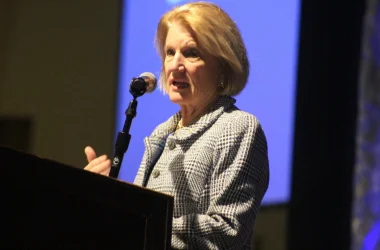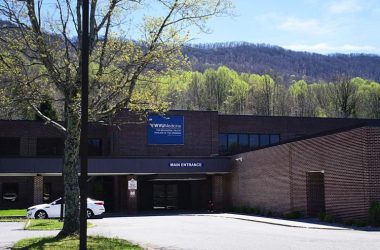By GARY FAUBER
The Register-Herald
BECKLEY, W.Va. — When Alabama and Clemson meet tonight for the College Football Playoff national championship — a rematch of their title fight 364 days ago — Tampa’s Raymond James Stadium will likely be sold out.
Even with four-digit ticket prices.
That would be nothing new for either program, both of which are accustomed to playing in packed houses.
Unfortunately, that would be bucking a national trend that the movers and shakers at college football’s elite level have been facing a number of years.
A story written last week by Eben Novy-Williams with Bloomberg News indicated that attendance among Football Bowl Subdivision programs as a whole dropped for the seventh consecutive season. According to the study, the trend is a bit nondiscriminatory between Power 5 and Group of 5 conferences.
Novy-Williams cited the University of Kansas of the Big 12 as dropping by 50 percent since 2009. At first glance that could be explained by the Jayhawks’ recent struggles, but the same study reveals that Western Michigan’s attendance in 2016 was well short of its 30,200 capacity (less than 24,000 per game) despite the Broncos’ perfect regular season, near top 10 ranking and being rewarded with a New Years Six access bowl invitation.
Western Michigan, of the Mid-American Conference, lost 24-16 to Wisconsin in the Cotton Bowl.
Attendance at the FBS level has dipped by 4 percent since 2009. The drop among Power 5 schools is just six-tenths of a percent, but at the G5 level it’s 3 percent.
Of course, there are models of both levels in the Mountain State, so it begs the question: Where do West Virginia and Marshall universities stand among this trend?
The numbers suggest both have been able to weather the storm.
WVU’s average home attendance this fall was 57,583, up by nearly 3,000 from the 2015 season of 54,826. That total was a little down from the previous season’s figure of 56,686.
The Mountaineers went 10-3 this season — just the ninth 10-win season in 125 years — in what was their best year in the Big 12 since joining the conference in 2012.
“What we did this year, we had a tremendous season, that certainly helped us,” said WVU athletic director Shane Lyons, who is beginning his third year in Morgantown. “Fans are excited about the program.”
In Huntington, Marshall has seen a gradual decline, although not enough to hit the panic button. In 2014, an average of 27,461 fans watched the Thundering Herd’s attempt at perfection. In 2015 it was 26,322 and this fall — Marshall’s worst in the Doc Holliday era — it fell to 24,670.
“Our attendance has stayed pretty steady the last several years,” Marshall athletic director Mike Hamrick said. “That’s due in part obviously to the Louisville game when we had almost 40,000 fans, and last year we opened with Purdue. Those were both sellouts.”
Both teams stand tall in attendance among their conference foes.
WVU was fourth in the Big 12 behind the usual suspects of Texas (98,026), Oklahoma (86,532) and Texas Tech (57,972). Big 12 teams averaged 57,017 in home attendance this season.
Marshall was second in Conference USA, trailing only Southern Miss (28,588). The average home attendance for C-USA teams was just 19,930.
“But (declining attendance) is a trend and I don’t know that anybody could tell you a reason why,” Hamrick said.
There certainly seems to be a level of frustration.
In the Bloomberg story, Florida Atlantic AD Patrick Chun said, “I hope it’s cyclical, but there’s not really an answer out there right now.”
Chun can feel the pain of declining attendance almost more than anyone. FAU averaged just 10,073 fans in 2016, by far the lowest in C-USA and the fourth-lowest in FBS (MAC member Ball State had the lowest, at 7,789).
One way to at least attempt driving up attendance has been to attract fans who are not necessarily football fans, be it through concerts, minor league baseball-type promotions and family ticket packages.
The day before a game in the 2015 season, Lyons tweeted out, “We have a very special moment planned during the @WVUMarchingBand pregame show Saturday! Be in your seats by 2:40 p.m. so you don’t miss it!”
“Fans come to Morgantown for activities more than just the game itself,” Lyons said. “I think our fans have enjoyed those activities, and they enjoy the tailgating experience.”
The student body is a strong focus for FBS athletic directors. According to the Bloomberg story, research has found that students who do not attend games are less likely to donate as alumni. Donation dollars are paramount at any university, including WVU through its Mountaineer Athletic Club and Marshall through its Big Green Foundation.
“That’s your future fan base,” Lyons said. “We continue to work with the student body to make sure the interest is there. We bring different things to the plate, and we know the students are not always going to sit through a three-hour game.
“Over the years, talking internally, our support from the student section is as good as it has ever been. But we have to catch up with the times.”
“We work hard for our student support,” Hamrick said, mentioning the Marshall Maniacs promotion that offers several incentives to students and actually has helped drive season ticket sales up 4,000 per season to an average of 16,000.
WVU season ticket sales have averaged nearly 29,000 the last three years.
“If they are not coming to the games as students,” Hamrick said, “how can you expect them to come as alumni?”
See more from The Register-Herald




